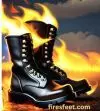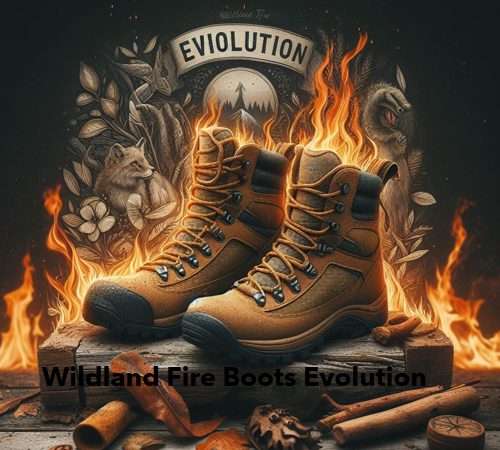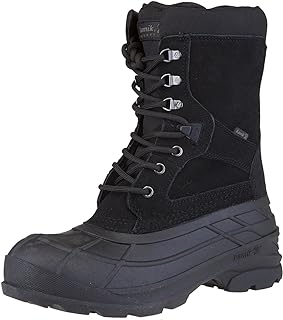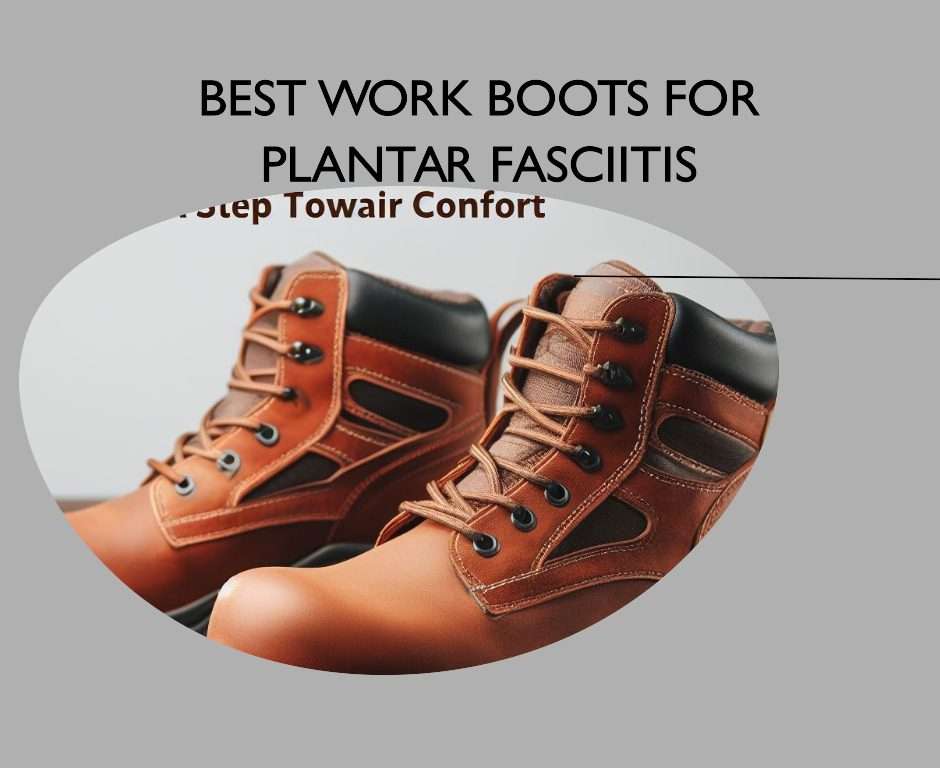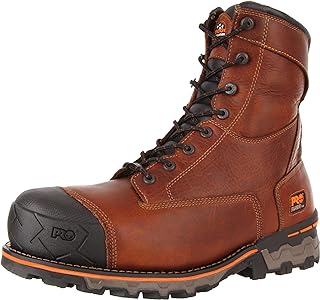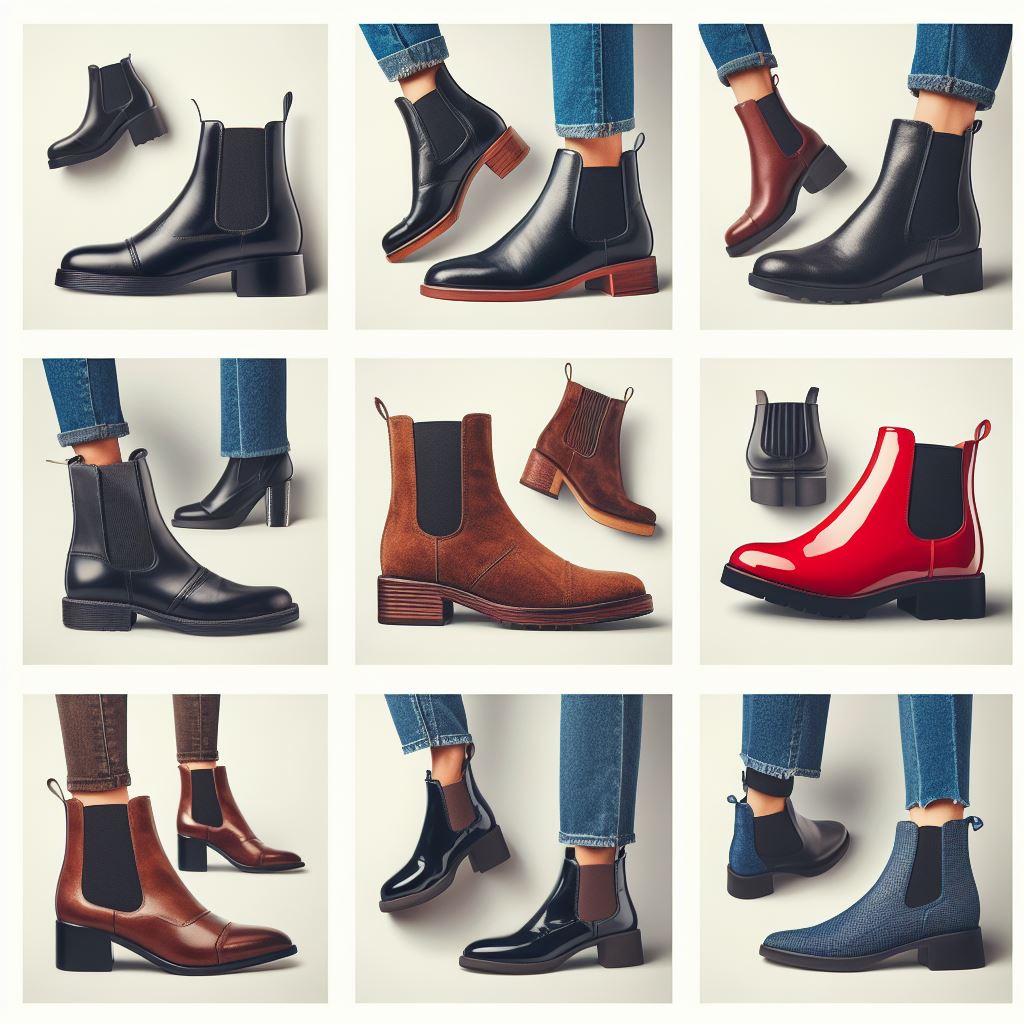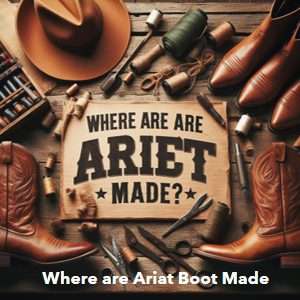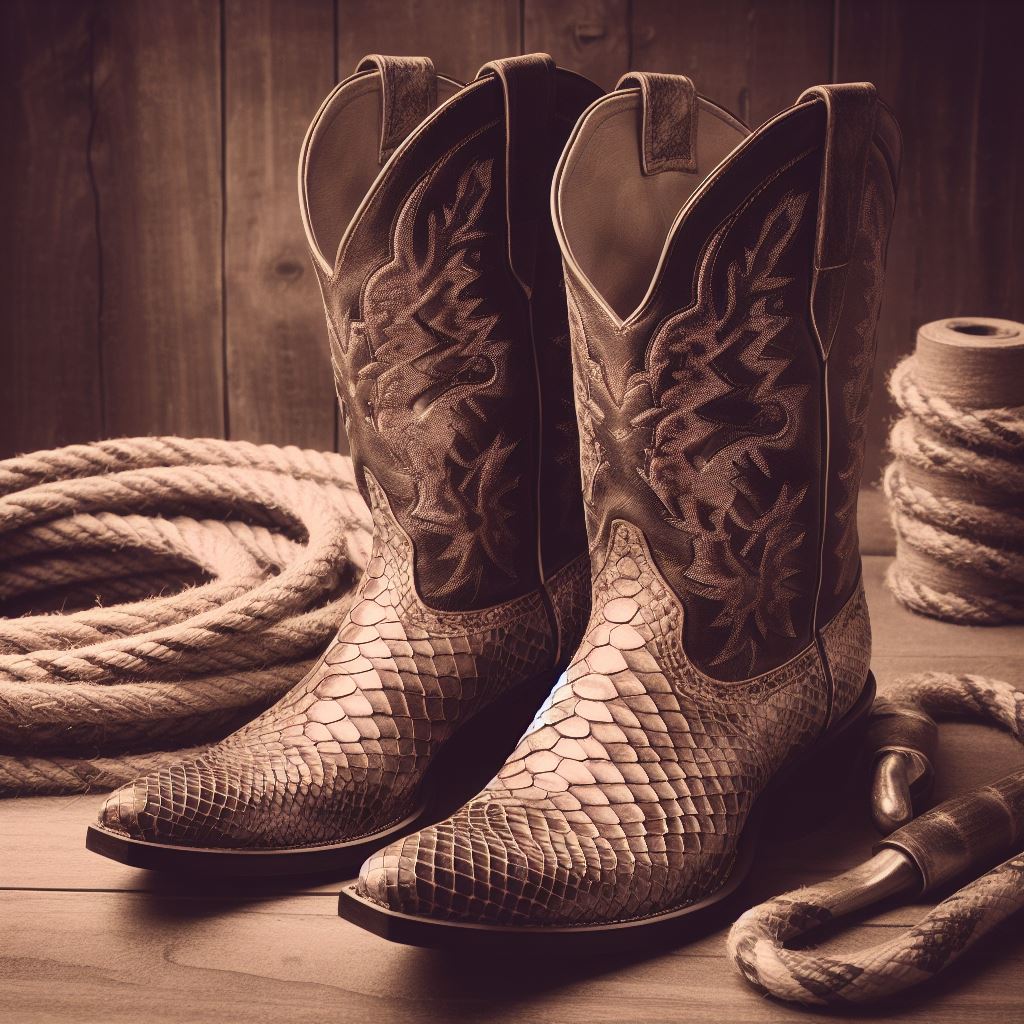Are you ready to take in the breathtaking winter landscape in a fun and exciting way? Look no further than snowshoeing! Not only is it a fantastic workout, but it allows you to explore nature at a leisurely pace or even race through the trails. But before you hit the snow, it’s essential to have the right boots for the job. Don’t worry, though; we’ve got you covered! In this blog article, we’ll help you select the best boots for snowshoeing that fit your style, budget, and needs.
Table of Contents
ToggleWhat Types of Boots Are Best for Snowshoeing?
The type of boots you need for snowshoeing depends on the terrain, the snow conditions, and the level of activity you plan to do. Generally speaking, there are three types of boots that work well for snowshoeing: winter boots, hiking boots, and alpinism boots.
Winter Boots
Winter boots are the most common and versatile type of boots for snowshoeing. They are designed to keep your feet warm, dry, and comfortable in cold and snowy weather. Winter boots usually have a high shaft that covers your ankles and prevents snow from getting inside. They also have a waterproof or water-resistant upper, a thick and insulated lining, and a rubber or synthetic sole with good traction. Winter boots are ideal for snowshoeing on flat or rolling terrain, such as parks, golf courses, or groomed trails. They are also suitable for beginners or families who want to enjoy a leisurely snowshoeing outing.
Some of the benefits of winter boots for snowshoeing are:
- First, they are easy to find and affordable.
- Next, they are compatible with most types of snowshoes.
- Then they are comfortable and warm.
The drawbacks of winter boots for snowshoeing are:
- First, these boots are not very supportive or stable for your ankles and feet.
- Next, they are not very breathable or moisture-wicking, which can cause your feet to sweat and get cold.
- They are not very durable or resistant to abrasion, which can shorten their lifespan.
Some examples of winter boots for snowshoeing are:
Columbia Bugaboot Celcius Plus OmniHeat


Merrell Thermo Chill Mid
These are the best budget-priced snowshoeing boots, according to Happiest Outdoors. They have a waterproof suede and mesh upper, 200g of insulation, a molded nylon arch shank, and a rubber outsole with a 5mm lug depth. They are durable, breathable, and supportive, and they offer great value for money.
Oboz Bridger Insulated


Hiking Boots
Hiking boots are another type of boot that can work well for snowshoeing. They are designed to provide support, stability, and protection for your feet and ankles when hiking on uneven and rough terrain. Hiking boots usually have a lower shaft than winter boots, but they have a more rigid and structured upper, a stiffer and thicker midsole, and a more aggressive and durable outsole. Hiking boots are ideal for snowshoeing on moderate to steep terrain, such as hills, mountains, or backcountry trails. They are also suitable for intermediate to advanced snowshoers who want to challenge themselves and explore new places.
Some of the benefits of hiking boots for snowshoeing are:
- These boots are supportive and stable for your ankles and feet.
- Then they are breathable and moisture-wicking, which can keep your feet dry and cool.
- Also, they are durable and resistant to abrasion, which can extend their lifespan.
The drawbacks of hiking boots for snowshoeing are:
- At first, they are not very warm or insulated, which can make your feet cold in low temperatures.
- Next, they are not very waterproof or water-resistant, which can make your feet wet in deep or wet snow.
- Also, they are not very compatible with some types of snowshoes, especially those with fixed bindings.
Some examples of hiking boots for snowshoeing are:
Salomon X Ultra Mid-Winter CS WP


KEEN Revel IV Polar
These are the best snowshoeing boots for wide feet, according to Happiest Outdoors. They have a waterproof leather and synthetic upper, 200g of insulation, a compression-molded EVA midsole, and a rubber outsole with a dual-climate compound. Also, they are spacious, comfortable, and warm, and they have a roomy toe box and a wide fit.
Vasque Breeze WT GTX
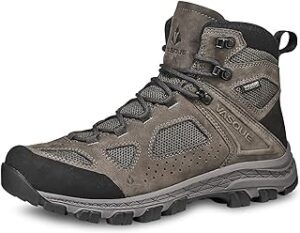

Alpinism Boots
Alpinism boots are the most specialized and technical type of boots for snowshoeing. They are designed to withstand the extreme conditions and challenges of alpine climbing and mountaineering. Alpinism boots usually have a very high shaft that covers your calves and shins, and they have a very rigid and robust upper, a very stiff and thick midsole, and a very aggressive and durable outsole. Alpinism boots are ideal for snowshoeing on very steep and rugged terrain, such as glaciers, ice fields, or high-altitude peaks. They are also suitable for expert snowshoers who want to push their limits and reach new heights.
Some of the benefits of alpinism boots for snowshoeing are:
- These boots are very warm and insulated, which can keep your feet cozy in sub-zero temperatures.
- Also, they are very waterproof and water-resistant, which can keep your feet dry in deep or wet snow.
- They are very compatible with some types of snowshoes, especially those with crampon-compatible bindings.
The drawbacks of alpinism boots for snowshoeing are:
- These boots are very expensive and hard to find.
- Also, they are very heavy and bulky, which can slow you down and tire you out.
- They are very stiff and rigid, which can reduce your mobility and comfort.
Some examples of alpinism boots for snowshoeing are:
La Sportiva Nepal Cube GTX
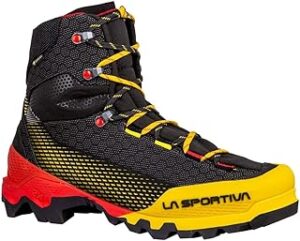

Scarpa Mont Blanc Pro GTX
These are another great option for alpinism boots for snowshoeing, according to Snowshoe Magazine. They have a waterproof suede and synthetic upper, Gore-Tex insulation, a Pro-Fiber XT 20 insole, and a rubber outsole with a Vibram compound. They are warm, breathable, and stable, and they have a full rubber rand and an integrated gaiter.
Lowa Mountain Expert GTX Evo
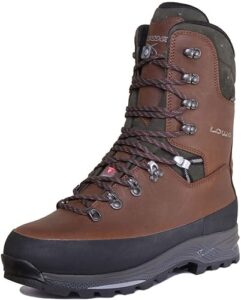

What Features to Look for in Snowshoe Boots
Now that you know the different types of boots for snowshoeing, you might wonder what features to look for when choosing the right pair for your adventure. Here are some of the most important features to consider:
Fit
The fit of your snowshoeing boots is crucial for your comfort and performance. You want your boots to fit snugly but not too tightly, to allow some room for your toes to wiggle and your feet to swell. They must fit securely, but not too loosely, to prevent your feet from sliding and rubbing inside. To find the best fit, you should measure your feet, try on different sizes and models, and wear the same socks and insoles that you will use for snowshoeing. You should also test your boots with your snowshoes to make sure they are compatible and comfortable. If you need some tips on how to measure your boot shaft length, Click here.
Warmth
The warmth of your snowshoeing boots is essential for your safety and enjoyment. You want your boots to keep your feet cozy and prevent frostbite and hypothermia in cold and snowy weather. The warmth of your boots depends on the type and amount of insulation, the material and construction of the upper, the breathability and moisture-wicking of the lining, and the quality and thickness of the socks and insoles. You should choose your boots based on the temperature, the wind chill, and the activity level that you expect to encounter. You should also avoid sweating and wetting your feet, as this can reduce insulation and increase heat loss. If you suffer from plantar fasciitis, you might want to look for the best work boots for plantar fasciitis that can offer you both warmth and comfort.
Waterproofing
The waterproofing of your snowshoeing boots is important for your comfort and hygiene. You want your boots to keep your feet dry and prevent blisters, infections, and odors in wet and snowy conditions. The waterproofing of your boots depends on the material and coating of the upper, the type and quality of the membrane, the design and sealing of the seams and zippers, and the maintenance and care of the boots. You should choose your boots based on the depth, the density, and the type of snow that you expect to encounter. You should also dry and clean your boots after each use to preserve their waterproofing and prevent mold and bacteria growth.
Traction
The traction of your snowshoeing boots is vital for your stability and mobility. You want your boots to grip the ground and prevent slipping and falling on icy and snowy surfaces. The traction of your boots depends on the material and pattern of the outsole, the depth and shape of the lugs, the presence and type of cleats or crampons, and the compatibility and adjustment of the snowshoes. You should choose your boots based on the steepness, the roughness, and the hardness of the terrain that you expect to encounter. You should also check and replace your boots’ outsole and cleats or crampons when they wear out to maintain their traction and prevent accidents.
The best snowshoe boots on the market
Now that you know what features to look for in snowshoeing boots, you might wonder: What are some of the best snowshoeing boots on the market? There are many brands and models of snowshoeing boots available, and each one has its own pros and cons. To help you narrow down your choices, we have compiled a list of some of the best snowshoeing boots on the market, based on the type, the features, the reviews, and the ratings of the boots. Here are some of the best snowshoeing boots on the market:
- Winter Boots for Snowshoeing: Columbia Bugaboot Celcius Plus OmniHeat
- Hiking Boots for Snowshoeing: Salomon X Ultra Mid-Winter CS WP
- Alpine Boots for Snowshoeing: La Sportiva Nepal Cube GTX
- Budget-Priced Snowshoe Boots: Merrell Thermo Chill Mid
- Snowshoeing Boots for Wide Feet: KEEN Revel IV Polar
- Ultra-Durable Snowshoe Boots: Oboz Bridger Insulated
- Runner-Up for the Best All-Around Snowshoeing Boots: Vasque Breeze WT GTX
- Snowshoeing Boots for Women: Sorel Caribou
- Snowshoeing Boots for Men: Kamik NationPlus
How to care for your snowshoe boots
Finally, you might wonder how to care for your snowshoeing boots to prolong their life and performance. Snowshoeing boots are not cheap, and they can get damaged by the harsh and wet conditions of snowshoeing. To keep your snowshoeing boots in good shape, you should follow these steps:
- Dry your boots after each use by removing the insoles and laces and placing them in a warm and ventilated place. Do not use a direct heat source, such as a radiator or a hairdryer, as this can damage the material and the shape of the boots.
- Clean your boots regularly by brushing off the dirt and snow and wiping them with a damp cloth. Do not use soap, detergent, or solvent, as this can affect the waterproofing and the color of the boots.
- Treat your boots with a waterproofing spray or wax to restore their water repellency and prevent stains. Follow the instructions of the manufacturer, and apply the product evenly and sparingly. Do not use oil or grease, as this can clog the pores and reduce the breathability of the boots.
- Store your boots properly by keeping them in a cool, dry place away from sunlight and moisture. Do not fold or compress them, as this can deform the material and the structure of the boots.
By following these steps, you can ensure that your snowshoeing boots will last longer and perform better, and that you will have a more enjoyable and comfortable snowshoeing adventure.
Ending Note
So, are you ready to step up your snowshoeing game? We’ve explained the different types and features and even provided examples of the best boots for snowshoeing. Plus, we’ve included some tips on how to properly care for your boots so they last you for many winters to come. We hope you’ve found this post informative and helpful, and we’d love to hear your thoughts in the comments below. And if you’re looking for even more information and tips on snowshoeing, don’t forget to check out our website. Get ready to hit the trails and experience the magic of winter like never before!
FAQ
Most frequent questions and answers
What makes snowshoeing boots different from regular winter boots?
Specifically made for winter activities, snowshoeing boots offer improved insulation, waterproofing, and superior grip to make navigating icy terrain easy.
What makes insulation in snowshoeing boots so important?
Insulation traps heat to keep your feet warm, making it comfortable to spend long chilly days outside.
How do I know if a snowshoeing boot is waterproof?
In order to make sure your boots keep your feet dry in slick and rainy situations, look for features like a waterproof membrane or treated materials.
How important is traction when snowshoeing?
On icy and slick surfaces, traction is essential for stability. For safe footing, look for boots with deep treads and sophisticated outsoles.
How should snowshoeing boots fit to prevent discomfort?
To avoid blisters and discomfort on long winter treks, choose a snug but comfortable fit. Make sure there is space for cozy socks.
Can I use regular winter boots for snowshoeing?
While ordinary winter boots might be enough, specific snowshoeing footwear comes with characteristics developed to meet the particular requirements of this winter sport.
Are there specific boots for beginners in wildland firefighting?
It is true that boots with a blend of comfort, toughness, and protection are available for those just starting out in wildland firefighting.
How often should I maintain my snowshoeing boots?
Regularly clean and waterproof your boots to prolong their lifespan. Follow the manufacturer’s guidelines for maintenance.
Can I find stylish boots for bunions that are also comfortable?
Absolutely. There are stylish boots designed with comfort features to accommodate bunions, ensuring both style and relief.
Do I need to break in snowshoeing boots before using them?
It’s advisable to break in your snowshoeing boots by wearing them for short periods before embarking on longer adventures to ensure optimal comfort.
Visit Firesfeet Blog – Your One-Stop Shop for Boot Reviews and Guides!
Here, we empower firefighters with the right boots for their needs. Our collection includes a variety of styles and sizes, guaranteeing the perfect fit for anyone. We take pride in our product quality, ensuring that our boots stand the test of time. With Firesfeet, you can confidently shop for wildland firefighting boots. Visit us today and discover why we are the most trusted source for firefighters looking to take on any challenge wearing firefighting footwear!
Keep yourself safe out there!
#WildlandFirefighters #SafetyFirst #Firesfeet#
As an Amazon Associate and Adidas associate, I get money from qualifying purchases and may make money from links on this website.
